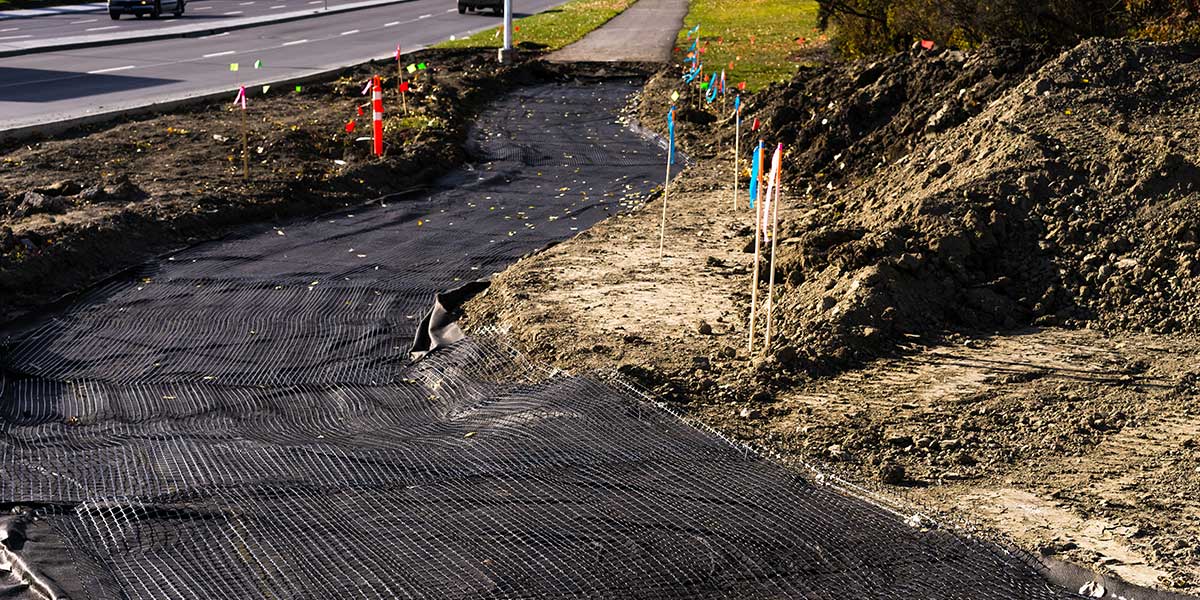
Geonet Application Guide: How to Use It
Geonet holds a significant place among geosynthetic products, offering an effective solution for soil and infrastructure projects. In this blog post, we will explore the Geonet application guide in detail. We will explain the basic information about how Geonet is used, its advantages, and the application processes to help you achieve the best results in your projects.
1. What is Geonet and What Does It Do?
Geonet is a three-dimensional geosynthetic product commonly used in soil stabilization, water management, and road construction. The primary function of Geonet is to allow the passage of water or other fluids through the soil while also binding soil or material layers together. This structure enhances soil stability and extends the lifespan of the structure.
Geonet is typically made from durable plastic materials such as polyethylene or polypropylene. Due to its high strength and longevity, it provides reliable performance in various climatic conditions. These properties make Geonet a crucial component in construction and infrastructure projects.
2. Applications and Advantages of Geonet
Geonet’s diverse applications and benefits significantly impact the efficiency and sustainability of projects. Here are some areas where Geonet is used and its advantages:
- Soil Stabilization: When used for soil stabilization, Geonet controls the movement of soil layers and minimizes settlement issues. This is particularly important in sloped areas and weak soil conditions.
- Water Management: Thanks to its impermeable properties, Geonet helps in effectively directing water and optimizing drainage systems. This prevents waterlogging and reduces soil erosion.
- Road and Infrastructure Projects: In road construction and infrastructure projects, Geonet use enhances the durability of road layers and provides a long-lasting structure. It also helps in leveling road surfaces and preventing deterioration.
The advantages of Geonet include its durability, low maintenance requirements, and long lifespan. These features improve the cost-effectiveness of projects and provide a sustainable solution.

3. Geonet Application Steps
Proper application of Geonet maximizes its performance and effectiveness. Here are the essential steps for the Geonet application process:
- Preparation and Planning: Before application, thoroughly assess the project area and soil conditions. The area where Geonet will be used must be cleaned and leveled. Additionally, ensure that the necessary equipment and materials are available.
- Placement of Geonet: When placing Geonet in the application area, ensure that the material is laid out evenly and flatly. The edges of Geonet should align with the existing soil. Careful placement of other materials on Geonet is essential to prevent accumulation on the product.
- Covering and Compaction: Properly cover and compact the soil or material layers placed over Geonet. This step enhances Geonet’s performance and ensures structural integrity. The compaction process ensures that the material integrates seamlessly with Geonet.
The most critical factor in Geonet application is ensuring that the product is placed and covered correctly. This ensures the longevity and efficiency of your project.
Geonet is an effective geosynthetic product that offers significant advantages in various applications. Its use in soil stabilization, water management, and infrastructure projects enhances project success and provides sustainable solutions. By following the correct application steps, you can maximize Geonet’s performance and achieve long-lasting results in your projects.
-
The Benefits of Basketball for Kids and Tartan Ground!
Sport is an activity that enables children to develop physically, socia...
Review News -
Which Phases Have Been Gone Thorough To Make Indoor Carpet Pitch?
Sports facilities and carpet pitches became widespread and people start...
Review News -
How to Produce Artificial Grass
While artificial grass production is one of the most valuable options, ...
Review News